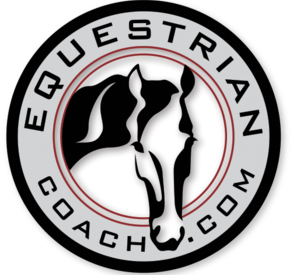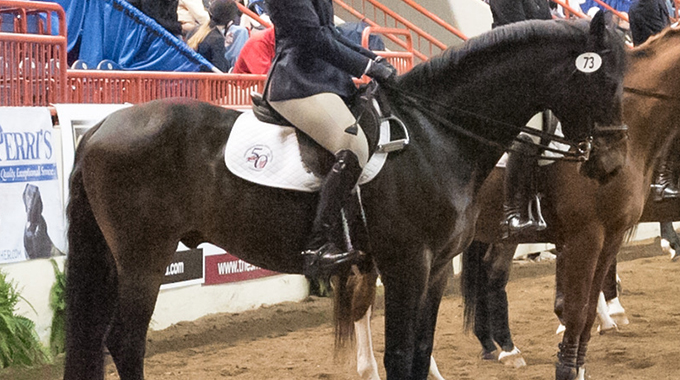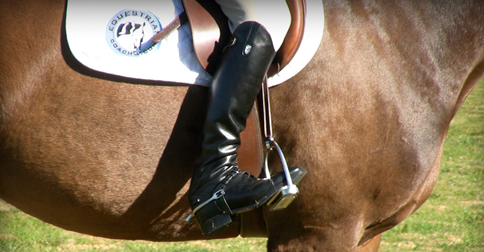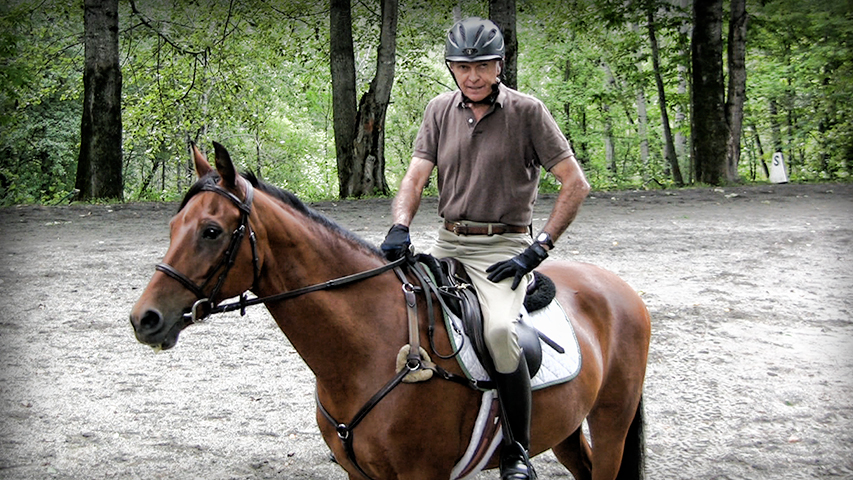Julie Winkel
- 06 Nov, 2018
- 0 Comments
- 5 Mins Read
No-Stirrup November: Exercises To Make Dropping Your Irons Less Painful
Photo credit for all photos: Tricia Booker Photography
Submitted by member: Victoria
What is your favorite exercise without stirrups? Is it better to ride with the stirrup leathers crossed over or leave them hanging down by your foot?
Answer by Julie Winkel
First of all, I think there is a lot of value to riding without stirrups for riders at every level. Riding without stirrups teaches a rider to have more feel of the true movement of the horse’s gaits as well as makes a rider’s legs stronger. However, if done incorrectly, this can create some problems for both horse and rider.
When doing work without irons for long periods of time, the irons should either be completely removed from the saddle, or crossed correctly where the stirrup buckle is pulled down, then the leathers are pulled back on the stirrup bar, and crossed over the saddle so that the leather is flat, completely upside down heading the other direction. The reason for removing the stirrups is to make it more comfortable for your horse. For that reason, it is a rule in the equitation division that the judge must allow the rider to cross their irons if they wish, when asked to work without them. The reason for correctly crossing the leathers so they are flat is so there isn’t a bump that could cause a bruise on the rider’s thigh.
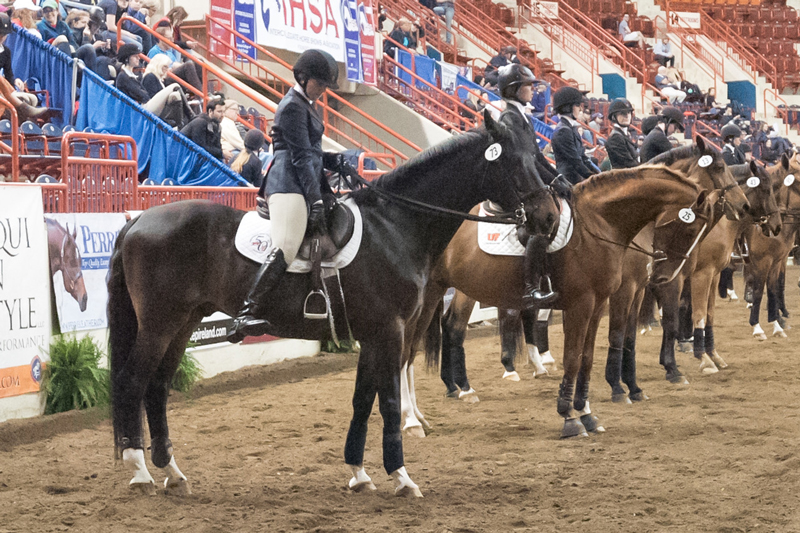

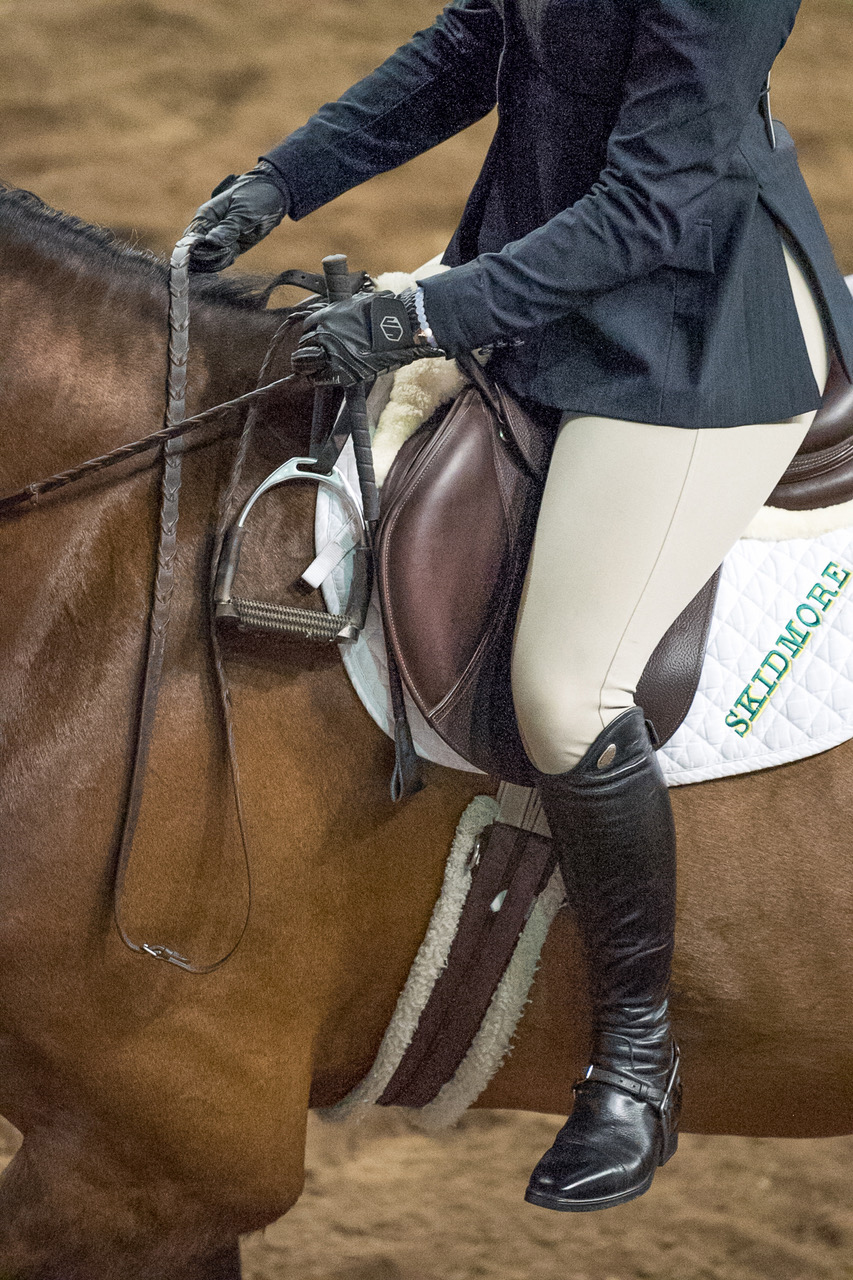
When I have students work without irons, I am careful to make sure they are comfortable and in a controlled situation if they are more novice riders. I also don’t have them spend a lot of time in the beginning, as the riders need to build up over several lessons. Even at a very novice level, I do like to have them practice dropping and gathering their irons, as it’s the only way to get competent in being able to retrieve them should they accidentally lose one on course.
I DO NOT have riders post the trot without irons. I feel strongly this only teaches the rider to post off their knee and not their inner thigh. As the rider gets tired, they resort to pinching with their knee and lose their lower leg. Instead, I like to school my students in a combination of light seat and full seat to properly develop the inner thigh, inner knee, and inner calf in order to create a correct, even, strong connection which is the educated leg.
Riding without irons is a great exercise to feel the swing of the trot and help them relax their seat—moving with the horse. It also allows the rider to feel the rolling gait of the canter and be able to sit and follow this motion. Additionally, riders that tend to perch, brace their leg, or overuse their hands in the downward transitions can gain a better understanding of how to correctly use their seat by sinking in and opening the hip angle, when there isn’t a stirrup to brace against.
I don’t have students start jumping without their irons until I am confident of their strength and balance without irons. And, actually, I believe the most important thing to gain from no iron work is balance. All riders tend to weight one leg and seat bone more than the other. This affects the horse negatively—creating a crooked horse due to the crooked rider. By removing the stirrups, which are a crutch, the rider naturally finds a better balance on the horse’s back.
Two words of caution. First, be cognizant of the horse’s conformation. Don’t do a lot of no stirrup work on a long-backed horse that has a weak top line. It is very hard on this type of horse’s back. That’s why stirrups were invented in the first place—to allow the rider to get off the horse’s back.
Secondly, be careful to not ride without stirrups thinking this is the ultimate training test. I’ve had students that couldn’t ride with their stirrups after taking them away for too long!
More Learning
Click on the links below for more blog posts on similar issues:
Exercise to Follow the Motion of a Horse’s Canter With Your Hips and Seat by Bernie Traurig
Heels Down! by Cori Christmann
Video Recommendations:
Equitation Tips – Legs
Bernie Traurig
Bernie further breaks down equitation to it’s component parts, referencing the great examples of beautiful and effective riding that we saw in our topic, Equitation – An American Tradition of Excellence. This is a series of how-to tips to take your equitation to the next level. We start with the foundation of every rider’s position, the leg.
Running Time: 4 minutes and 46 seconds
Air Time – Getting Tight In The Tack Over Jumps With Zazou Hoffman
Bernie Traurig
Maintaining a secure balance with your horse over the fence is crucial. In this video Bernie outlines a series of exercises designed to improve your balance & security in the tack – beautifully demonstrated by Maclay winner, Zazou Hoffman.
Running Time: 12 minutes and 47 seconds
Rider Fitness – Exercises While Mounted Part A
Denny Emerson
Join Denny Emerson in this two part series addressing the rider’s fitness. There are no short cuts … you must RIDE to get in shape to RIDE! But Denny will guide you and he will make it possible for you to achieve your fitness goals. Step one is to become a half seat hero. Make this your default position, relying on your core, abs, quads and calves to keep yourself in balance. In this position you are sparing your horse’s back. With Denny’s strategies, time and perseverance, you will be amazed at your progress and your horse will thank you.
Running Time: 7 minutes and 1 seconds
Have Something You Want to Ask Our Panel of Experts?
Ask The Experts is the ultimate way to get help from the top professionals in the equestrian industry without leaving the comfort of your home. This service is available to Monthly, Annual, and Lifetime Members of EquestrianCoach.com.
